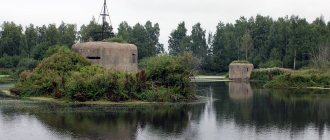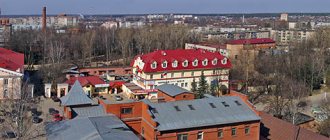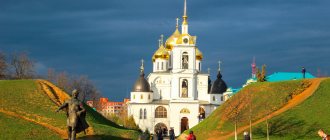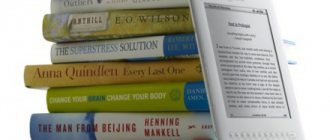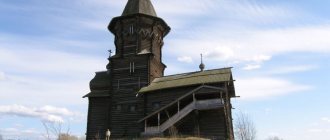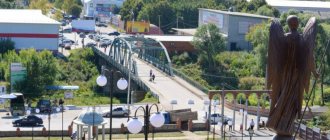Pushkin: areas, recreation, excursions, museums and churches, cuisine and restaurants, shopping and shops, attractions of Pushkin.
- Last Minute Tours
to St. Petersburg
Tsarskoe Selo, now the town of Pushkin in the suburbs of St. Petersburg, is by far the most famous literary symbol of Russia and another summer residence of the Russian Tsars on the map. It is often compared to Venice - it is a festival city that you can visit at any time of the year and be sure to witness or participate in an exciting celebration. Here, the New Year and Maslenitsa are celebrated on a truly Russian scale, poetry festivals, costume performances and imperial balls are organized. In a word, it is not surprising that Pushkin has a special atmosphere, which he was able to preserve for several centuries. Here they treat with great respect the genius of Alexander Sergeevich, who glorified the Tsarskoye Selo Lyceum. They also remember other great poets - Anna Akhmatova and Nikolai Gumilyov, who spent their academic years here.
The Tsarskoye Selo Museum-Reserve with its famous parks and palaces is a favorite place for tourists coming to Pushkin. Foreign speech can be heard on every corner here, and the souvenirs are amazing in their variety: sellers will go to great lengths to attract attention.
Pushkin looks like a set of bright postcards. With one wonderful nuance: we can see all this beauty live.
Let's go to Tsarskoe Selo! Free, windy and drunk, The lancers are smiling there, Jumping onto a strong saddle Let's go to Tsarskoe Selo!
Osip Mandelstam
How to get to Pushkin
Pushkin is the closest suburb of St. Petersburg.
Minibuses depart from the Moskovskaya metro station every 5 minutes, and electric trains depart from Vitebsky and Baltiysky stations, which spend no more than half an hour on the way. Transport runs from early morning until late at night, so you can take your time and explore the sights in peace. From Moscow everything is also simple: from Pulkovo airport to the station. metro station "Moskovskaya", and then - to Pushkin by bus or directly to the place by taxi. More information about transport, schedules and prices can be found at this link.
Population[ | ]
| Population | ||||||
| 2002[2] | 2009[3] | 2010[4] | 2012[5] | 2013[6] | 2014[7] | 2015[8] |
| 101 655 | ↗122 796 | ↗135 973 | ↗139 597 | ↗150 316 | ↗165 151 | ↗171 593 |
| 2016[9] | 2017[10] | 2018[11] | 2019[12] | 2020[13] | 2021[1] | |
| ↗178 584 | ↗193 180 | ↗208 702 | ↗217 983 | ↗226 336 | ↗229 403 | |
Districts of Pushkin
Pushkin includes several districts: Central, Slavyanka, Sofia, Krasnoselka, the villages of Shushary and Aleksandrovskaya. Each of them has enough ancient buildings that you can leisurely look at while walking around the city.
One of the interesting historical districts of the city is Krasnoselka, which is located along the highway of the same name. If you drive along the highway, you can come across the Orthodox Church of St. Sergius, the Sofia Military Hospital, unusual in architecture, the officers’ meeting of the Rifle Regiment, and then stop at Bablovsky and Catherine Parks. Getting to Krasnoselka is easy - the final points of public transport stops are located here.
There are two interesting churches in Shushary - the Resurrection of Christ and Xenia of St. Petersburg. They were built recently, but are worth a look. In the Central region, most of the buildings appeared before the revolution. The main attraction of this area is Gostiny Dvor.
Also in this area there are the Historical-Literary and Memorial Lyceum Museums. Employees of the first museum will organize a walking tour of Pushkin with a story about the city. In the second you can learn about lyceum student Alexander Sergeevich and his first literary achievements. Here, on October 19, the Tsarskoye Selo Autumn festival is held - this is a kind of birthday of the lyceum.
Sofia has two of the most visited tourist spots - Catherine Park and St. Sophia Cathedral. Entrance to the park is paid, but in winter and after 18:00 it is open to everyone. In good weather, there are a lot of people in Ekaterininsky, especially families with children. Built at the end of the 18th century, the St. Sophia Cathedral has now been restored according to the first models. It contains icons from the 17th to 19th centuries. Every Christmas, a festive performance is organized here and a field kitchen is deployed from military schools located nearby.
Pros and cons of living in the Pushkinsky district
As with everything, there are pros and cons here. We analyzed data about the area and drew our conclusions about the convenience of the location.
Advantages
1. Palace and park complexes.
Of course, the main advantage of the area is its historical and architectural value. It’s not for nothing that Tsarskoye Selo is recognized as a world heritage site, and Pavlovsky Park as a cultural heritage site of federal significance!
Russian emperors always chose the best places for their holidays, and the Pushkinsky district is no exception! And the proximity of two large parks (together more than 700 hectares of greenery) has a beneficial effect on the local ecology.
2. Psychological comfort and homogeneous development. Pushkinsky district is an area of predominantly low-rise construction. Cozy, low-rise residential complexes are being built in Pushkin and on the Tsarskoye Selo Hills.
Low-rise buildings create the classic look of the Pushkinsky district
The exception is Shushary as the location closest to St. Petersburg. The rest of the Pushkinsky district has a limited height and retains a chamber and uniform architectural appearance.
3. Educational opportunities. The location is well developed in terms of social and educational infrastructure - there are more than 45 kindergartens and about 40 schools in the Pushkinsky district. And these are only government facilities, but there are also private ones!
In addition to secondary schools, residents of the region have access to gymnasiums and lyceums, there are colleges, schools and even a Cadet Corps. The Pushkinsky district also has its own universities.
All this makes the location attractive and promising for young families.
5. Transport accessibility. The main locations of St. Petersburg can be reached not only by your own car, but also by public transport. In the area there are 5 railway stations with trains going in the direction of the Vitebsky station, and 3 railway stations in the direction of the Baltic station. Both stations are about half an hour away from the farthest station.
You can also take the train to the Kupchino metro station - about 20 minutes on the road. You can also get to the metro by minibus. Transport runs regularly.
For motorists - Moskovskoe and Pulkovskoe highways, Vitebsky prospect. There are two exits to the ring road. A significant plus is the proximity to the airport.
4. Development of road infrastructure. Much attention is paid to the repair of existing roads and the construction of new ones. Accessibility to the area has improved significantly over the past few years, with authorities promising to continue developing the road network.
A route is already being designed that will completely relieve the area of transit traffic.
6. Cultural recreation. The cultural component of the Pushkinsky district is not limited to palace and park ensembles. There are a large number of museums, places of serious historical value, architectural monuments, and theaters here.
There are many historical churches and cathedrals in the Pushkinsky district
The area is also famous for its cathedrals, the history of which goes back more than 100 years! Even a simple walk will become an event filled with cultural impressions and vivid emotions!
7. New residential areas. The development of the Pushkinsky district is not limited to historical and Soviet houses. New complexes are actively appearing, which include not only housing, but also social and commercial infrastructure. These are, in particular, the previously mentioned areas in the Tsarskoye Selo Hills and Shushary.
Their appearance makes it possible to improve the overall infrastructure of the area and generally has a good effect on its development.
8. City registration with suburban comfort. Despite the fact that the Pushkinsky district is somewhat different from the rest of St. Petersburg and leads an isolated life, administratively it is still a city unit, therefore all residents have a St. Petersburg residence permit (more precisely, registration). Moreover, in fact, the area is not a typical “bedroom”, but a cozy suburb.
Flaws
1. Lack of shopping and entertainment infrastructure. Although the cultural component of the area is great, the situation is more difficult with more mundane entertainment. There are no cinemas, and there are not many coffee shops either. There are restaurants, but they are mostly aimed at tourists - the prices are too high.
There are no malls familiar to St. Petersburg in the Pushkinsky district
There are very few shopping complexes, and all of them are not the malls familiar to St. Petersburg residents, but small-town shopping centers with medium-sized stores. There are only two hypermarkets in the entire region, one in Pushkin, the second in Shushary. True, there are a sufficient number of chain supermarkets, so there are no special problems with daily purchases.
2. Traffic jams. Although the authorities are striving to improve the road infrastructure, it is still very far from ideal. In the mornings and evenings the area is stuck in long traffic jams.
3. Lack of metro. A metro has been promised to the Pushkinsky district for a long time, but so far it is still not here. True, the situation will change before the end of this year, when the Shushary station will be commissioned. It’s just a pity that this won’t change anything for the residents of the village of the same name.
The appearance of the metro in Shushary will not help local residents much
The fact is that the station is located far from the built-up areas. And even after the launch of Shushar, the Kupchino station will remain closer and more convenient for new buildings in the Pushkinsky district.
4. Medical problems. Another important nuance of life in the Pushkinsky district is the lack of medical infrastructure. Their main share is concentrated in Pushkin, with a small share falling to Pavlovsk. And for all of Shushary there is only one clinic. Other parts of the region do not have their own hospitals at all.
5. Work in St. Petersburg. The disadvantages of the Pushkinsky district end with the lack of jobs. The overwhelming majority of the population works in St. Petersburg. The situation is complicated by transport accessibility during peak hours, so some local residents spend more than two hours on a round trip every day.
Review of life in Pushkinsky district
Instead of a resume, an honest review from a local resident.
Sergey, 25 years old, lives in Slavyanka (historical district, adjacent to the eastern border of Pushkin)
What I like about life in the Pushkinsky district is the number of places for family recreation and picnics. In this regard, it is very comfortable and cozy here.
For me, a significant advantage is the proximity of the airport - transfers are much cheaper than from other parts of the city. Almost everywhere you can park your car normally: there is a lot of space, everything is paved.
Among the advantages of the area, I can highlight the fairly low cost of housing - both rent and sale. At least in apartment buildings. There are plenty of supermarkets and pharmacies. But for other goods - clothes, office supplies. - I have to go to Kupchino. Go to the cinema or just sit with friends - also in St. Petersburg.
There are few places in kindergartens and schools, and from September to May there are huge traffic jams. And the hospital is inconvenient; you have to travel far.
Transport
There are about 10 bus routes along Pushkin. Tourists will need No. 371 - from the Detskoe Selo station to the Catherine Palace and No. 378, which runs between all three parks - Ekaterininsky, Alexandrovsky and Babolovsky. The fare is 22-28 RUB depending on the route. A taxi in Pushkin will cost about 300 RUB.
A great alternative to public transport and your own legs is a bicycle. You can bring it by train from St. Petersburg, where there are many more rental companies, or rent it on the spot, but it is better to book in advance. The rental company is located in the paid parking area opposite the Catherine Park, the cost for 1 hour is 250 RUB, for 2 hours - 500 RUB, a deposit is also required. Rentals are closed in winter.
Intra-city municipalities[ | ]
Within the boundaries of the Pushkinsky district of St. Petersburg there are 5 intra-city municipalities, including 2 cities and 3 villages[14]:
| № | Flag | Coat of arms | WMO status | WMO name | Area, km² [15] | Population, people[1] (2021) |
| 1 | city | Pavlovsk | 39,80 | ↘17 223[1] | ||
| 2 | city | Pushkin | 89,30 | ↗112 978[1] | ||
| 3 | village | Shushary | 106,63 | ↗95 155[1] | ||
| 4 | village | Alexandrovskaya | 4,77 | ↘2728[1] | ||
| 5 | village | Tyarlevo | 2,62 | ↘1319[1] |
Cafes and restaurants of Pushkin
There are a lot of restaurants in Pushkin for every taste - from pretentious and expensive establishments to quite affordable pizzerias, sushi bars, and bakeries. It makes sense to book tables in advance only in some famous places, for example, in the Admiralty, Tsarskoye Selo Present or Daniel restaurants (the first two are located in historical buildings on the territory of the museum-reserve). And so, in the city there is a general tourist rule - the further you are from the main excursion trails, the cheaper you can have lunch, and not always at the expense of quality.
Pros of living in Pushkinsky district of St. Petersburg
Entertainment and attractions of Tsarskoye Selo
The main thing that attracts crowds of curious tourists to Tsarskoe Selo is the famous Amber Room in the Catherine Palace. To admire it, you will most likely have to stand in a long line. As is known, the original Amber Room, taken by the Nazis from occupied Pushkin, disappeared without a trace in Königsberg before the Russian troops entered it. Restoring the masterpiece took many years and required the use of about 6 tons of amber. But the palace itself is equally magnificent both outside and inside - just look at the grandiose Golden Enfilade of palace halls, created according to Rastrelli’s design.
Everything that visitors see today is the fruit of the titanic work of restorers, through whose efforts after World War II the palace literally rose from the ashes.
In Catherine Park, which serves as a magnificent setting for the luxurious palace, there are many beautiful alleys, picturesque ponds and canals and remarkable buildings. For example, the history of the Hermitage pavilion is curious - its purpose was to spend time in a narrow circle, and in order to avoid the intrusive presence of servants, a clever system for submitting lunch orders was developed. The slate board, on which each guest wrote his wishes for the menu, was lowered into the kitchen on a string. And after the meal, the tables themselves went under the floor, and the pavilion turned into a dance hall. Pay attention to the Grotto, a traditional decoration of English landscape parks of the 18th century, and the Turkish Bath, which exactly reproduces one of the mosques in Constantinople. One of the symbols of Pushkin was the sculpture-fountain “Girl with a Jug”; a copy was installed in the park; the original is kept in the Russian Museum. A magnificent view of the park opens from the Granite Terrace, in front of which a colorful flower carpet is spread.
Less grandiose, but nevertheless remaining one of the best examples of classicism architecture, the Alexander Palace attracts visitors with an exhibition of household items of the royal family: personal belongings, dresses, toys of Tsarevich Alexei. It was here that after the revolution of 1905 the family of the last Russian Emperor Nicholas II permanently lived. During the Nazi occupation, the palace housed the Gestapo and German headquarters, the basement became a prison, and the area in front of the palace became a cemetery for SS soldiers. In Alexander Park, the Chinese Village, which arose as a result of a passion for the culture of the East, is of particular interest. The oriental theme is continued by the Great Chinese Bridge made of pink granite, the Dragon Bridge, the Cross Bridge and the Chinese Theater, of which, however, only ruins have survived to this day.
It is definitely worth visiting the building of the lyceum in Tsarskoe Selo, where young Pushkin studied. At that time it was one of the best educational institutions in Russia and in the world. Now the building houses a memorial museum, opened on the 175th anniversary of the birth of Alexander Sergeevich. In the Lyceum Garden there is a monument to Pushkin the Lyceum student. Another place in Pushkin associated with the great Russian poet is the museum in the Kitaeva House on Pushkinskaya Street, 2. Pushkin rented this dacha immediately after his marriage, here he wrote “Onegin’s Letter to Tatyana”, prepared for publication “Belkin’s Tale” and “Fairy Tale” about Tsar Saltan."
Education[ | ]
Universities[ | ]
- Leningrad State University named after. A. S. Pushkina
- St. Petersburg State Agrarian University (SPbSAU)
- Naval Engineering Institute (branch) of the Military Educational and Scientific Center of the Navy "Naval Academy named after Admiral of the Fleet of the Soviet Union N. G. Kuznetsov"
Technical schools, vocational lyceums and colleges[ | ]
- Russian College of Traditional Culture. Site No. 2
- School of Radioelectronics
- FCPOU "Interregional Fontanka" (unspecified)
. - The improvement committee was headed by the former head of the Kalininsky district. The heads of the Petrograd and Pushkin districts (Russian) changed their place of work. www.fontanka.ru
(November 12, 2021). Access date: November 12, 2022.
Pushkin for children
In Pushkin, the infrastructure is well developed in terms of recreation with children. In the courtyards there are playgrounds, quite a few small squares, alleys where it is convenient to walk with a stroller. In addition, the town is safe in terms of traffic and is great for exploring the fresh air in the parks.
The interactive museum-theater “Pushkin's Tales” is open here for little tourists. His entire program is based on the works of Alexander Sergeevich. The performances feature scenes with the participation of 33 heroes, the Golden Cockerel, the Shemakha Queen and other fairy tale heroes.

